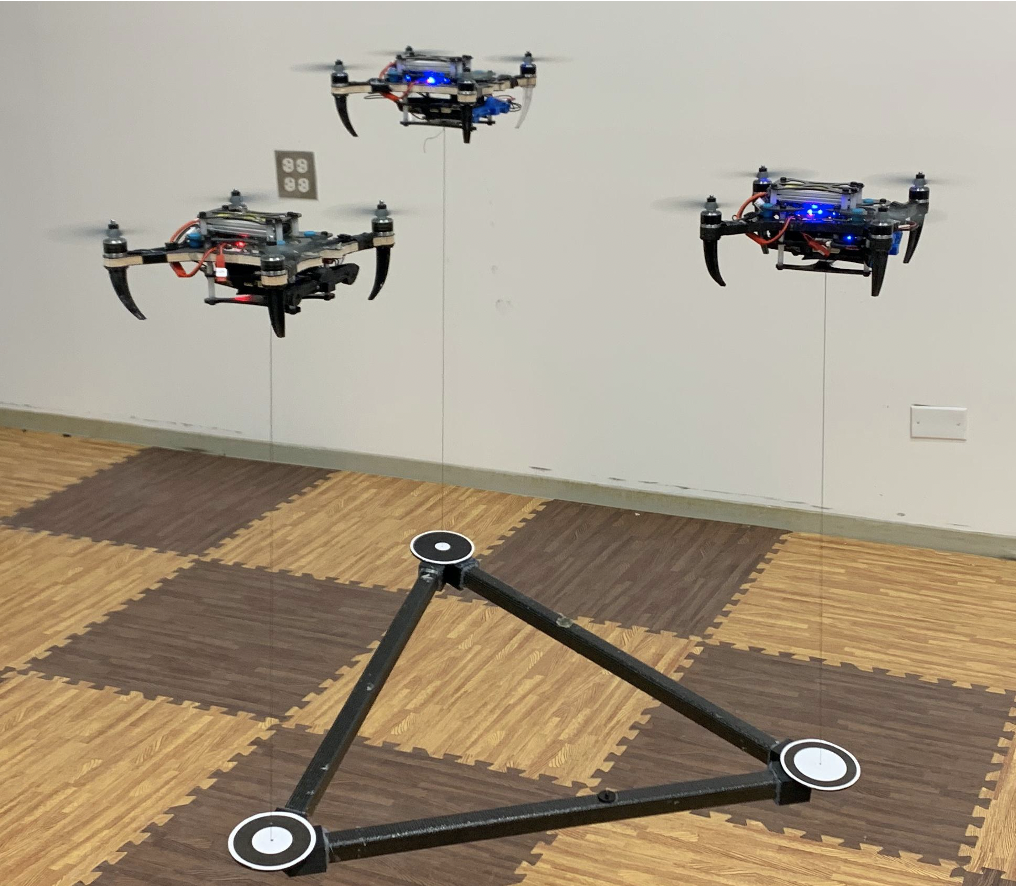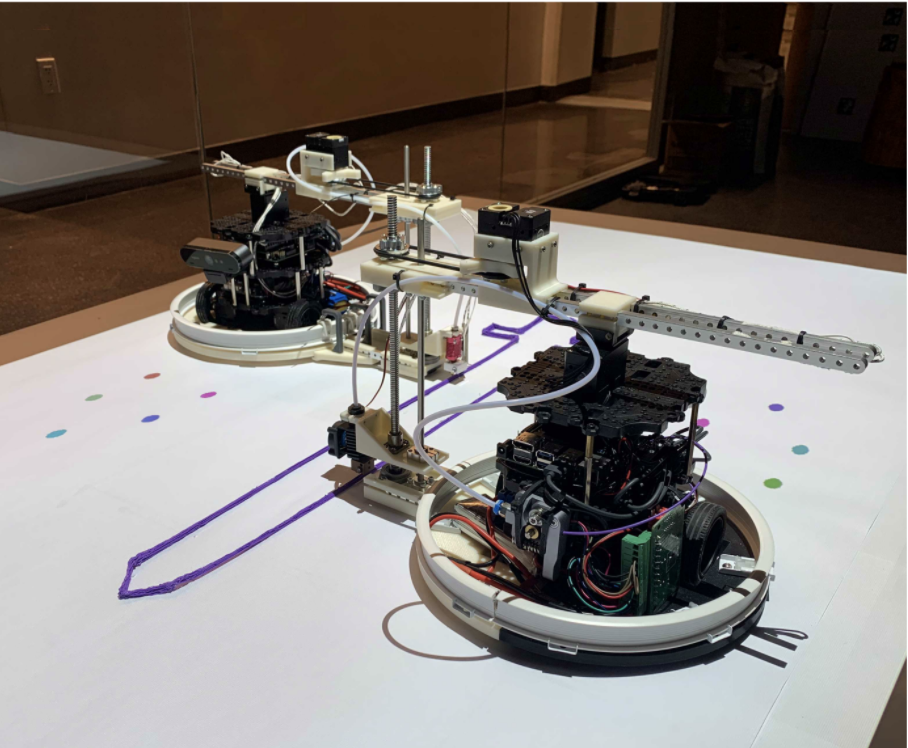NYU Tandon robotics researchers to present a record number of papers at the IEEE International Conference on Robotics and Automation

NYU Tandon Robotics researchers will make their presence known at the upcoming 2021 IEEE International Conference on Robotics and Automation, the largest and most important international conference about robotics. The conference, from May 30 to June 5, 2021 in Xi’an, China, will be held in a mixed format, featuring both in-person and remote sessions due to the ongoing COVID-19 pandemic.
Tandon’s robotics researchers in NYU Tandon’s departments of electrical and computer engineering, mechanical and aerospace engineering and civil and urban engineering, have 18 accepted papers and several workshops at the conference, which brings together experts to discuss the most cutting-edge research in robotics and autonomous systems.
The researchers will present their papers at the conference — representing work from four different labs — representing a particularly strong academic contribution given the cohort’s size. Among the works presented are:
- Advancements in human-robot interfaces through peripheral multichannel Electromyography (EMG) recordings and deep learning, from S. Farokh Atashzar’s lab. This new paradigm would reduce the need for machines to be recalibrated for users, increasing efficiencies. In addition, Atashzar's team has developed the theoretical foundation of a new family of intelligent robot control algorithms, named Windowed-Energy Variable Structure Passivity Signature Control, for optimizing physical human-(tele)robot interaction, with potential application in neurorehabilitation robotics.
- The work of Ludovic Righetti and his lab shows off their continued excellence in the field of legged locomotion and robotics manipulation with seven published papers. This includes a new framework based on Risk Sensitive Control to rigorously take into account the uncertainty about unknown contact locations and modulate how compliant or stiff the legs should be. The algorithm drastically improves how legged machines interact with their environment, rendering them more robust and safer to interact with.
 Giuseppe Loianno and his team at ARPL show their leadership in the area of autonomy of aerial robots. The papers cover a wide range of topics including a new predictive perception-control control framework for aerial vehicles equipped with cable suspended load known as PCMPC featured in IEEE Spectrum as well as a novel approach for coordinated perception and control of multiple drones for cooperative transportation and delivery using monocular vision and inertial sensing. This allows multiple machines to carry packages that would be difficult or impossible for a single large drone. The team also shows results on multi-target visual tracking for swarm coordination and human-swarm interaction as well as a construction and assembly approach with mobile manipulators.
Giuseppe Loianno and his team at ARPL show their leadership in the area of autonomy of aerial robots. The papers cover a wide range of topics including a new predictive perception-control control framework for aerial vehicles equipped with cable suspended load known as PCMPC featured in IEEE Spectrum as well as a novel approach for coordinated perception and control of multiple drones for cooperative transportation and delivery using monocular vision and inertial sensing. This allows multiple machines to carry packages that would be difficult or impossible for a single large drone. The team also shows results on multi-target visual tracking for swarm coordination and human-swarm interaction as well as a construction and assembly approach with mobile manipulators. In work that may offer big ramifications for the world of additive manufacturing, Assistant Professor Chen Feng and his lab AI4CE have achieved millimeter-level mobile robot navigation and control for fused deposition modeling that could create faster, more efficient fabrications at a larger scale than gantry-based 3D printers. The AI-based system requires almost no manual calibration of the system parameters, which will make it especially useful for projects beyond the capabilities of traditional 3D printers.
In work that may offer big ramifications for the world of additive manufacturing, Assistant Professor Chen Feng and his lab AI4CE have achieved millimeter-level mobile robot navigation and control for fused deposition modeling that could create faster, more efficient fabrications at a larger scale than gantry-based 3D printers. The AI-based system requires almost no manual calibration of the system parameters, which will make it especially useful for projects beyond the capabilities of traditional 3D printers.
In addition to the papers presented, NYU Tandon researchers will also discuss their research as part of workshops and panels.
Assistant Professor S. Farokh Atashzar organizes two workshops. The first, “Impact of COVID-19 on Medical Robotics and Wearables Research,” examines how the use of medical technology was disrupted by the pandemic, and how it can be used in the future to help provide the healthcare needed for subsequent waves and future pandemics. His second workshop “Holistic Integration (HI) of Intelligence in Dexterous Robotic Systems” will discuss how robotics research has been hampered by issues such as limited sensory perception, safety concerns, and the trade-off between power and dexterity in devices. The workshop aims to bring together leading researchers, clinicians, and industrial engineers of different backgrounds to discuss the applications and needs for the holistic integration of design, sensing, and intelligence in DMRS systems.
Two other Tandon researchers are organizing workshops as well. “Resilient and Long-Term Autonomy for Aerial Robotic Systems,” organized by Assistant Professor Giuseppe Loianno, will analyze two main challenges related to aerial robotics: their resilience and the ability to perform long term missions. The workshop will put a special emphasis on field research and mass deployment of drones and other aerial robots. “Recent advances in MPC and RL for legged robots,” organized by Associate Professor Ludovic Righetti, will discuss recent advances in employing Model Predictive Control (MPC) and Reinforcement Learning (RL) to control legged robots, increasing their abilities through the use of AI programing. Righetti and Loianno have also been invited to speak at several other panels throughout the conference.




